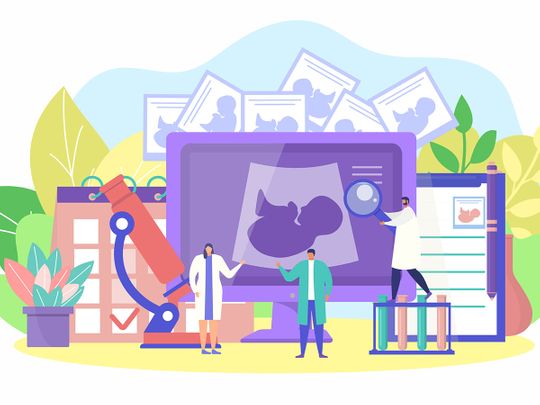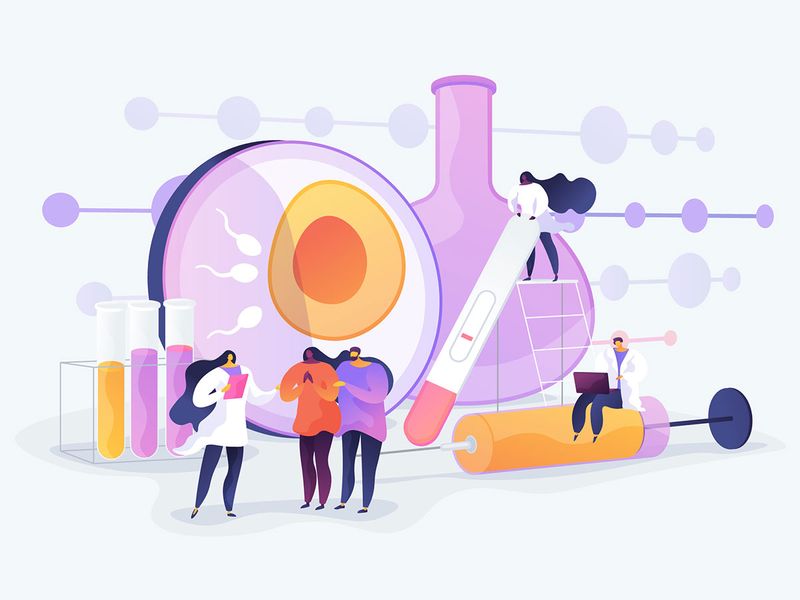
Thanks to cutting-edge technology, fertility issues need only be a speed bump on your road to conception. It can be an isolating experience, but troubles conceiving plague about 15 per cent of the couples in the UAE according to the latest studies, explains Maria Banti, Laboratory Director and Senior Clinical Embryologist at UAE-based Orchid Fertility clinic. You are not alone.
“Factors such as lifestyle choices including smoking, late childbearing, obesity and diabetes are responsible for this, as they are closely linked to infertility,” says Banti.
Wondering if it’s time to head to the doctor’s?
“Infertility is defined as not being able to achieve a pregnancy after one year of unprotected intercourse,” says Banti, adding, “[but] couples might want to investigate their fertility when they start planning for a baby and not wait for a year.”
What are the factors that may lead to infertility?
Common reasons why couples are suffering from infertility can be classified into male and female factors, says Dr lamia Al Sayegh, Specialist Reproductive Medicine and Infertility at Fakih IVF Dubai.
In the male partner, the factors are:
- Abnormal sperm parameters (sperm concentrations, motility, morphology),
- Varicocele,
- Existing chronic medical conditions like diabetes or cystic fibrosis, and
- Lifestyle choices as smoking, heavy alcohol use and anabolic steroids are the most incriminated.
In the female partner, the things to consider:
- Anovulation secondary to polycystic ovaries,
- Endometriosis,
- Tubal obstruction, and
- Advanced age with low ovarian reserve
Initial investigations
Banti explains that for the male partner, a simple semen analysis can give answers regarding the sperm quality. For the female partner, a hormonal check-up and ultrasound scan are the first tests to investigate the ovarian reserve and the uterine condition. For a further investigation, a hyperosalpingogram - an X-ray procedure used to study the uterus and fallopian tubes - might be suggested by the doctor to check if the fallopian tubes are blocked and a hysteroscopy to examine the inside part of the uterus.
Interventions
Education
Best for: Young couples (early 20s) who haven’t been trying to get pregnant for a long time.
For many young couples, the only aid required is some literature. Dr Pankaj Shrivastav, Director at UAE-based Conceive Clinic, explains: “Sometimes we have these couples coming to us and unfortunately, not being very sure of the dynamics of conception, with some of them not knowing when is a good time to have intercourse to be able to conceive.
“Some of them have this misconception that immediately after the period, that’s when they should be trying to conceive. That is very far from the truth, because it’s really in the middle of the cycle that ovulation is occurring. So quite often we find young couple just require some counselling and some education.”
Timed sexual intercourse
Best for: Couples with no issues based off initial investigations.
Dr Banti adds that the simplest treatment teaches people about timing. “This is the simplest fertility treatment ideal for couples that the results of the fertility investigation did not reveal any issue. This treatment involves the use of ultrasound and blood tests or even an at-home ovulation kit to properly time the intercourse based on the woman’s ovulation.”

This treatment involves the use of ultrasound and blood tests or even an at-home ovulation kit to properly time the intercourse based on the woman’s ovulation.
Ovulation induction
Best for: Women whose bodies don’t produce eggs often, those with PCOS or thyroid issues.
Dr Shrivastav explains” “Some women don’t make eggs, they have very infrequent cycles, polycystic ovarian disease, so their period may come after two or three months and their bodies may not even be making an egg at the time. So for them, we would just do ovulation induction. We try and correct the basic hormonal problem and we give them advice on exercise, dieting. Just five to six kilos if they can lose, that makes a big impact.
“Then some medication to help them make eggs, we scan them to see when the egg is being released and then they just have intercourse at that time.”
Intra-Uterine Insemination (IUI)
Best for: This treatment is ideal for couples with good sperm parameters and open fallopian tubes.
“The procedure involves ovulation monitoring for the woman with scans and blood tests. On the day of ovulation, the partner’s sperm is prepared in the laboratory and then placed directly into the uterus with a catheter,” says Dr Banti.
Intracytoplasmic Sperm Injection (ICSI)
Best for: Men who have poor sperm quality
“If the sperm is very weak and few in number, it’ll not be able to fertilise the egg. So we have to pick up a single sperm and inject it inside the egg,” explains Dr Shrivastav.

In Vitro Fertilisation (IVF)
Best for: Traditionally meant for those whose tubes were blocked. But now it’s extended into unexplained infertility, people who aren’t getting pregnant with ovulation induction and IUI.
Perhaps the best known – and one of the most advanced treatments is the IVF. “This is a more complex series of procedures that involves monitoring and stimulating a woman’s ovaries to produce more eggs, collecting the eggs under anaesthesia with the help of ultrasound, fertilising the eggs with the husband’s sperm in the laboratory, growing the embryos inside the laboratory and transfer them back to the woman in order to increase the chances of a pregnancy." This type of treatment can be offered to everyone in the UAE, as long as there is a marriage certificate in place.
IVF with Preimplantation Genetic Testing (PGT)
Best for: Couples with repeated implantation failure with IVF, recurrent miscarriages, an affected child, couples with inherited family genetic disease, advanced maternal age, male factor or couples that want to choose the gender of their baby for family balancing purposes.
Dr Banti says: “PGT is an add-on on the IVF treatment. The procedure entails all the steps of an IVF cycle including removal of some cells from each embryo, also known as embryo biopsy, genetic analysis of the cells and freezing of the embryos. The couple will have the embryo transfer at a subsequent cycle based on the chromosomal constitution of each one of the embryos.”
Percutaneous Epididymal Sperm Aspiration (PESA)
Best for: Men with a blocked tube
Dr Shrivastav explains that in this case, “ …the sperm is accumulating inside a tube called epididymis outside the testes. Under local anaesthesia, a fine needle is inserted into the tube and sperm is aspirated.”
Testicular Sperm Aspiration (TeSA)
Best for: Men who produce very little sperm
“There are men who don’t have any blockages, they are just not making enough sperm. Because it’s not enough, it’s not spilling out into the ejaculation. For these people we, we put a needle directly in the testis, suck out the tissue, macerate the tissue and look for sperm in it. If we find sperm we use it to do ICSI on the egg,” he explains.
What are the success rates of these treatments?
This depends, says Dr Shrivastav, on the age of the woman. “If the woman is 28 or 29 years old, it’s at 65 to 68 per cent, but if the woman is over 40, it goes down to 15 to 18 per cent success rate.”
With or without medical aid, a woman’s fertility levels decrease as she grows older. “Women are most fertile during their 20s; however, their fertility generally starts to gradually decrease during their late 20s and early 30s and more rapidly after age 35. A healthy 30-year-old woman has a 20 per cent chance of getting pregnant within one month of trying, but those chances drop to 5 per cent for a 40-year-old woman. It’s important to understand there isn’t a magic number, the decline is gradual,” Dr Shuchita Meherishi, Obstetrics and Gynaecology (Specialist), Aster Hospital, Qusais, told Gulf News in an earlier interview.
Have a topic you'd like us to discuss? Write to us at parenting@gulfnews.com








